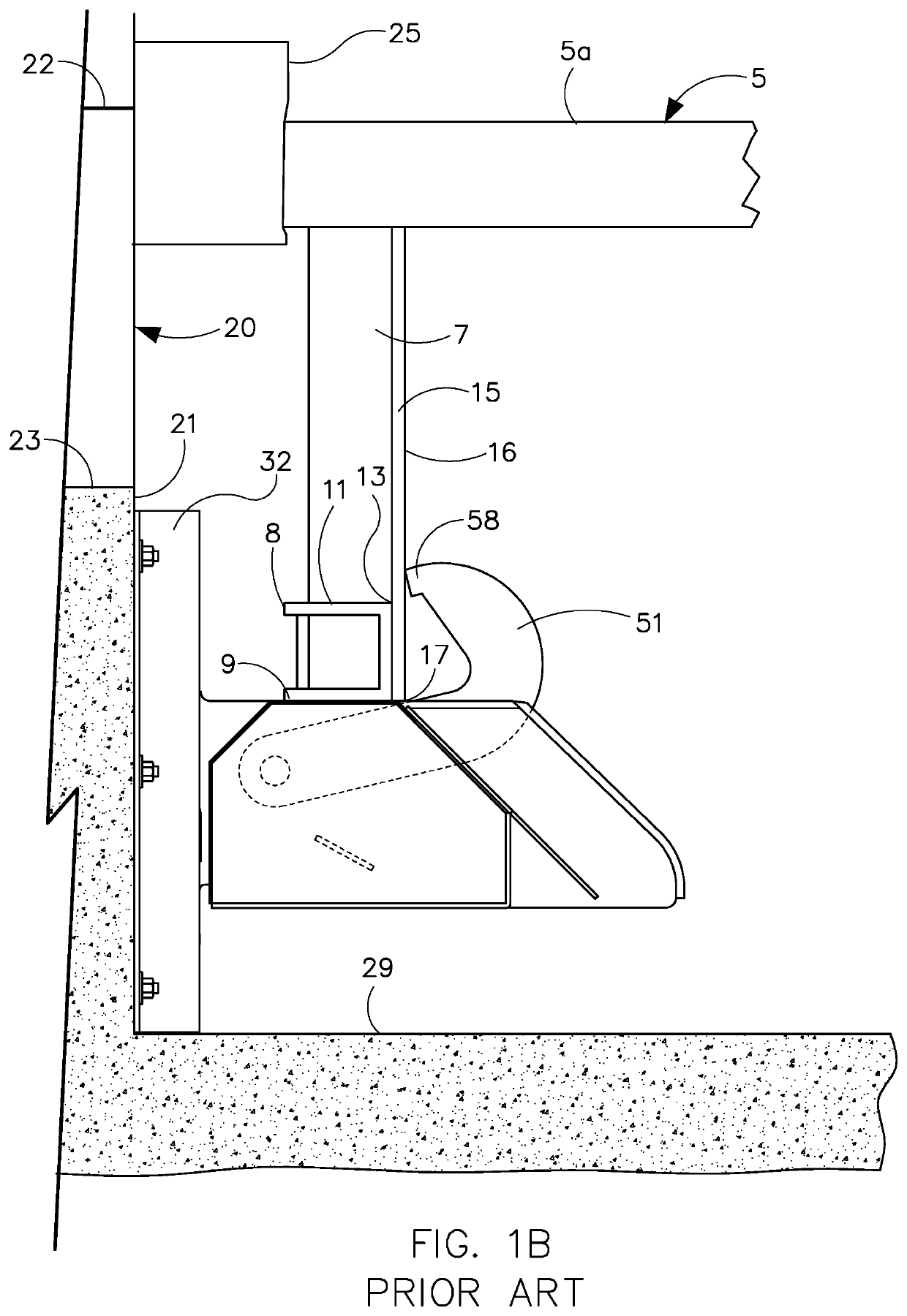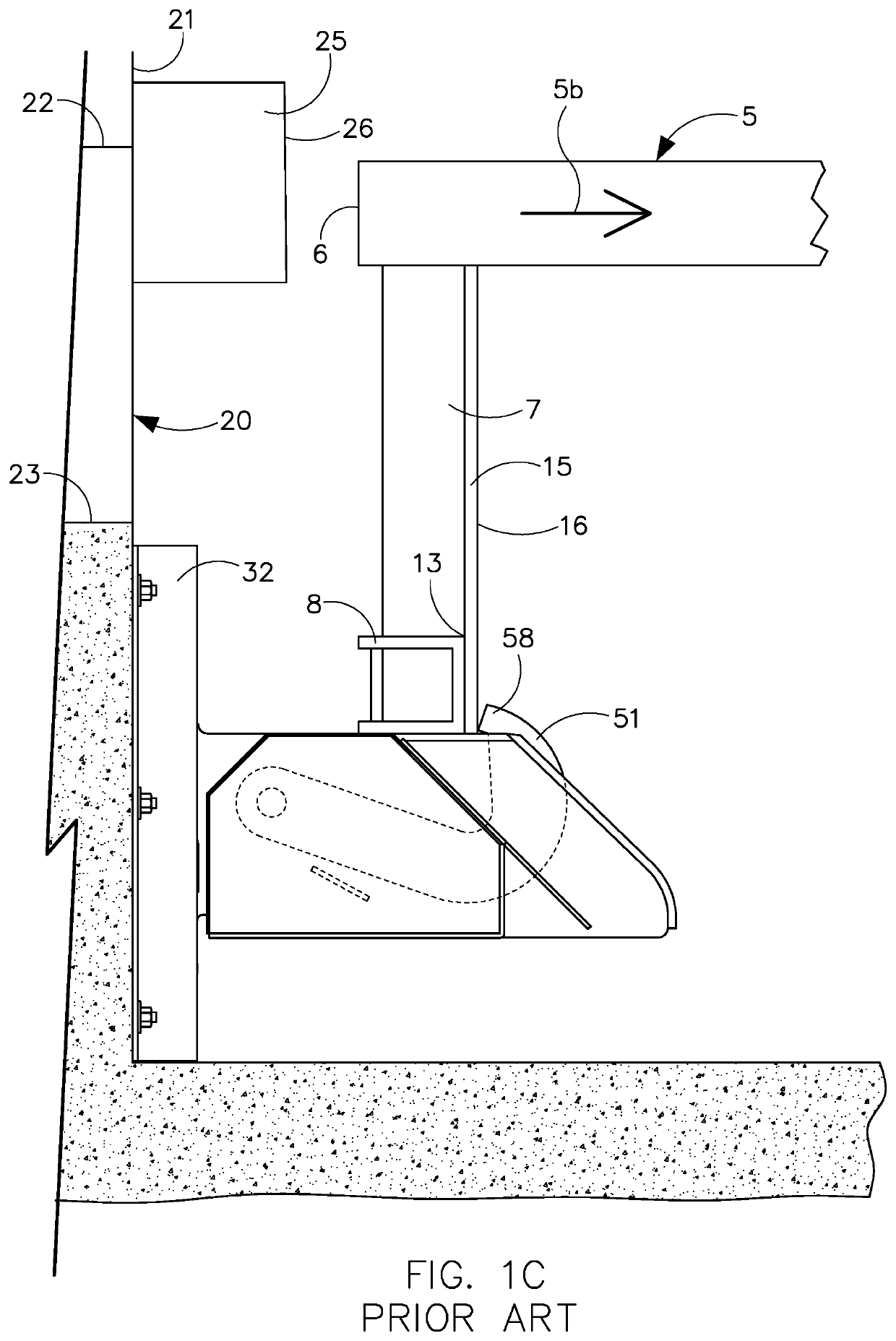Trailer restraint with auxiliary securing/locking mechanism
a technology trailer restraint, which is applied in the direction of transportation and packaging, loading/unloading, etc., can solve the problems of retraction of auxiliary locking mechanism, inadvertent and unsafe departure of trailer from loading bay, etc., to prevent excessive “dock-walking”, improve the working environment of the dock, and improve the grip of the rig bar
- Summary
- Abstract
- Description
- Claims
- Application Information
AI Technical Summary
Benefits of technology
Problems solved by technology
Method used
Image
Examples
Embodiment Construction
While this invention is susceptible of embodiments in many different forms, the drawings show and the specification describes a preferred embodiment of the invention. It should be understood that the drawings and specification are to be considered an exemplification of the principles of the invention. They are not intended to limit the broad aspects of the invention to the embodiment illustrated.
Conventional truck trailers 5 have a rear end 6 equipped with a mounting structure 7 for a rear impact guard (RIG) or ICC bar 8. The RIG mounting structure 7 extends down from a location proximal to and generally a few inches from the trailer rear end 6. The RIG bar or beam 8 is generally an elongated horizontal bar. The bar 8 is generally parallel to and spans the width of the rear end 6 of trailer 5, and is used to facilitate loading and unloading the vehicle. The bar 8 has a generally square or rectangular cross-sectional shape with four sides 9-12 as shown in FIG. 1A. The bar 8 has a low...
PUM
 Login to View More
Login to View More Abstract
Description
Claims
Application Information
 Login to View More
Login to View More - R&D
- Intellectual Property
- Life Sciences
- Materials
- Tech Scout
- Unparalleled Data Quality
- Higher Quality Content
- 60% Fewer Hallucinations
Browse by: Latest US Patents, China's latest patents, Technical Efficacy Thesaurus, Application Domain, Technology Topic, Popular Technical Reports.
© 2025 PatSnap. All rights reserved.Legal|Privacy policy|Modern Slavery Act Transparency Statement|Sitemap|About US| Contact US: help@patsnap.com



